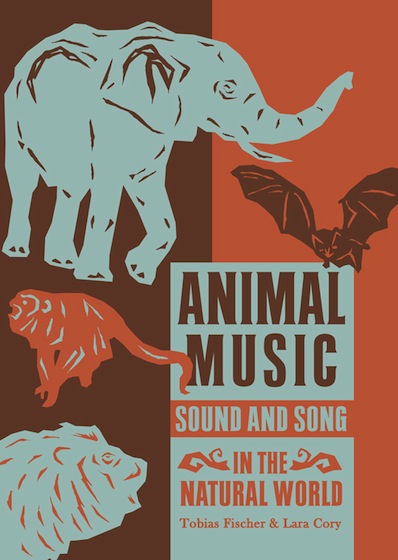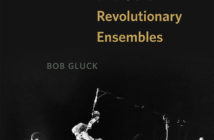Naturalist sound music is a well-established form and amongst the types of practitioners is immersive nature sound recordist, the nature documentary sound recordist, the natural anthropologist, the sound concrete artist among other practices or strategies. Animal music as a collection of interviews, articles and essays brings together some of the representatives of this artform and explicates the origins of the inclinations, aspects and varieties of the form as well as shedding light onto contemporary practice.
Fischer and Cory start the trajectory of the collection with a statement about ‘presence in the world’, the relation to the ecosystem and to the Amazon in particular. Environmental philosophy and the related existential aspects underwrite the inclination of this activity as well as the content of the art form. The tendency in this field to go further and to associate environmentalism with shamanism is not missed and while the concept is oft misconstrued in western society as a form of recreation, in traditional communities the role in the tribe of shamen is a central role with an emphasis on singing and healing. The misconception of this role in western society has translated it into musical societies that are predominately concerned with the altered states and hedonistic drug taking. While this book does not advocate this approach overtly it promulgates idea structures that have lead to this form of ‘artistic expression’.
Fischer and Cory use the idea of the musical artist as either inspired by or interpreting nature and explore expressions of this inclination and the centrality of music to both nature and spirituality. With nature as inspiration in the western canon Oliver Messiaen, emphasised specifically bird inspired symphonic music, and the association with his Christian spirituality. The inclination within Animal music is to concentrate on non-western cultural forms and to present a sympathetic rendering of these cultural forms within a naturalist and environmental focus. While some of those interviewed are sympathetic to questions of cultural identity and its expression in music I share the pragmatic view of Paul Pratley from the Wildlife Sound Recording Society who “doesn’t believe in the concept of music or aesthetics outside of the human realm.”
Conceiving of the natural sound world as a modern quasi-scientific rendering and translating it for the intellectual examination and systematization is examined as well. Discussions with the practitioners generally is examinations of technique, inclination, equipment, strategy, rationale and expression of their specific pet theoretical urge. Notable among these is Chris Watson and Jana Winderen and Mike Webster. They present versions of their theoretic concerns, discuss technique and recording strategies which open up for the casual listener and artists interested in this oeuvre aspects of this endeavour. Also they bring into question the idea of animal sound and the meta-question of it as a language, song or merely a biological expression. This overall is left open and people express diverse opinions as to whether this is real or an imposed human concept.
Scientific explorations of the minutiae of animal expression of animals, in particular cats, elephants, apes and bats is explored and mixed with the anecdotal and mythological. Questions of animal language, the complexity of the sounds and the attempts to codify and translate the meaning and the utility of animal expression is explored in some depth. The further analysis of the discrepancies of biology between species and the ranges of differing species which necessitate translation in order to conceptualise meaning. Whether this act is even possible is given some pondering. There remains the question whether the imposition of ideas of language or song actually exists outside of human concerns and there are a wide variety of views on the subject that range from ideas of ‘bird choruses’ to ‘animal orchestras’, to the use of sound as territorial call or as mating call. However one can consider Animal music generally to be a wide primer on the overall research to convey to the general reader an impression of the research domains that inform the domain of environmental and natural sound recording.
For the musical listener who is interested in nature sounds and the musician, or sound recordist, who is exploring this genre Animal music presents a wide and open entry into the practice. For those scientifically minded people who are unwilling to entertain shamanism, magic, or expressions of cultural identity as representing anything in particular then Animal music may be too liberal in its willingness to explore alternative viewpoints. To those who have an unproblematic relationship with western culture this book may challenge this view. As environmentalism has often expressed the concern that the lack of a holistic perspective and the anthropocentric focus of western culture is the cause of our environmental problems. For those inclined to evolutionary biology music may present a superfluous expression and the book itself may be an evolutionary anomaly. Depending on how wide or narrow the scope of your interests will grant credence to some of the concerns of the book is up to your own judgement. However beyond the theoretical issues this book documents an artistic practice that has claimed a niche within the field of experimental music production.
Innerversitysound
Resources
http://strangeattractor.co.uk/books/animal-music/
http://www.wildlife-sound.org/
http://macaulaylibrary.org/
http://naturesoundsjp.org/
http://www.gruenrekorder.de/
http://www.birds.cornell.edu/brp/elephant/
http://research.culturalequity.org/home-audio.jsp




